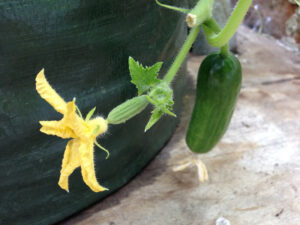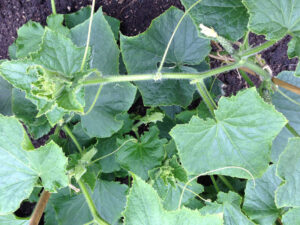If you’ve noticed that your cucumbers are a little (or a lot) bitter lately, don’t give up hope. A little water, mulch and patience will provide relief.
Most cucumber plants contain a bitter compound called cucurbitacin, which can be present in the fruit as well as the foliage. Bitterness in cucumbers tends to be more prominent when plants are under stress from low moisture, high temperatures or poor nutrition. Although most areas of the state received abundant moisture earlier in the season, more recent hot, dry conditions have encouraged production of the bitter compound. Plant breeders, however, have developed many modern cultivars that lack the bitter genes.
For some cucumber eaters, the bitter taste is accompanied by a digestive discomfort known as a burp. Some newer cultivars of cucumbers do not have the bitter compound and, thus, no burp. So, some seed companies called their bitter-free cukes “burpless.” Newer cultivars with thinner skin also tend to be less bitter.
The amount of bitterness in the cucumber depends on the severity of the heat and drought. In most cases, cutting off the stem-end and removing the skin of bitter cucumbers removes much of the bitterness. Some fruits are bitter all the way through and should be discarded. Bitter cucumbers will not taste any better when pickled!
Watering during droughty periods — 1-1.5 inches of water in a slow, gentle application — will help keep bitterness out of subsequent fruits. Apply a mulch, such as straw, shredded bark or newspaper, to help cool the soil, conserve moisture and keep weeds under control.
Next year, your best bet is to plant bitter-free cultivars and provide optimum growing conditions, when possible. Many cultivars are listed as bitter-free, including Burpless, Carmen, County Fair, Diva, Fanfare, Garden Sweet, Marketmore 76, Slice More, Sweet Slice, Sweet Success, Sweeter Yet, and Tasty Green. New cultivars arrive each year, so be sure to read through next season’s garden catalogs and websites to find the bitter-free types.

